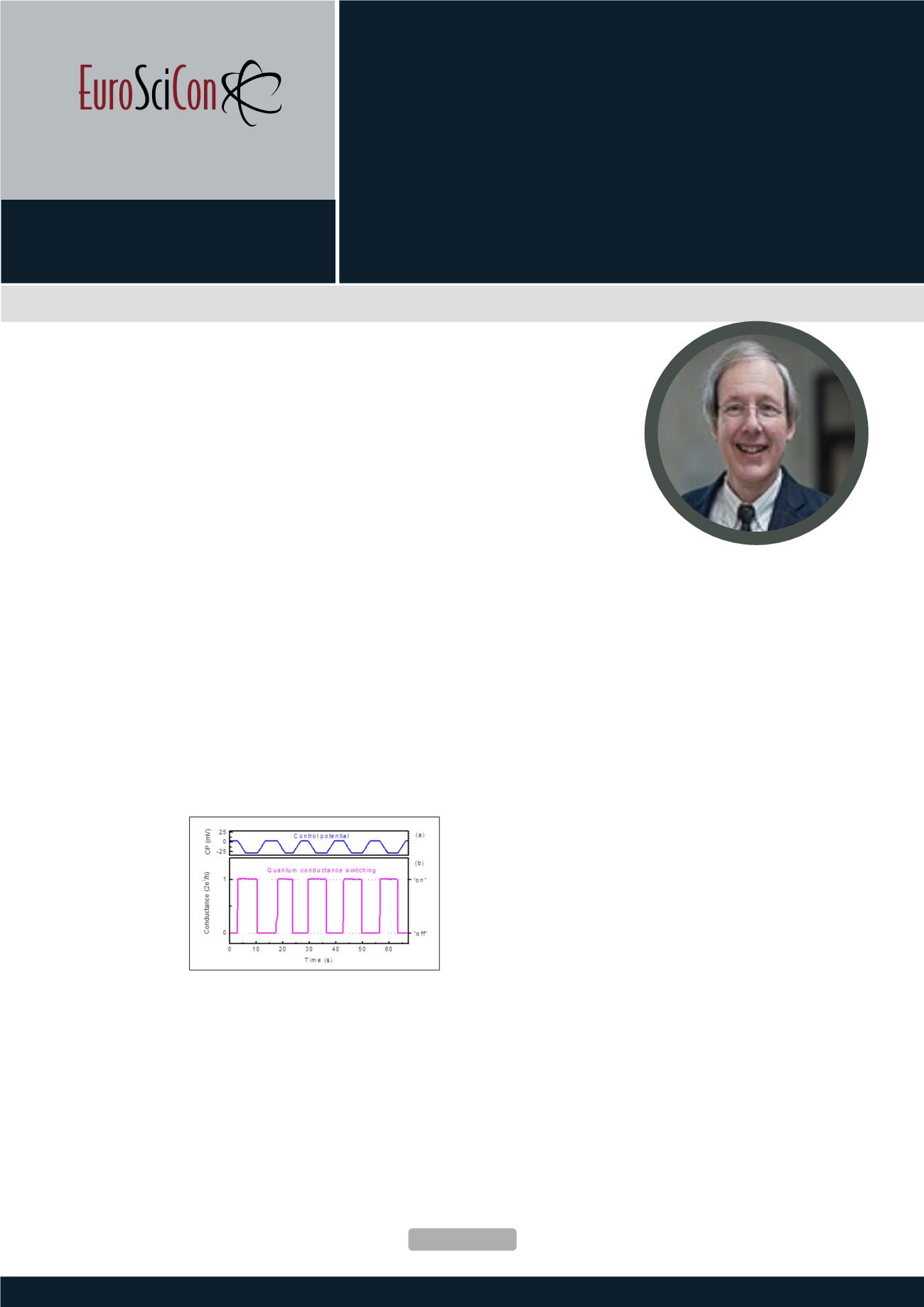

E u r o S c i C o n C o n f e r e n c e o n
Nanotechnology &
Smart Materials
Nano Research & Applications
ISSN 2471-9838
O c t o b e r 0 4 - 0 6 , 2 0 1 8
Am s t e r d a m , N e t h e r l a n d s
Nanotechnology & Smart Materials 2018
Page 51
A
quasi-solid state atomic-scale quantum conductance switch is demonstrated
which allows to open and close an electrical circuit by the controlled and
reproducible reconfiguration of individual silver atoms within an atomic-scale
junction. The only movable parts of the switch are the contacting atoms. The
device which is fabricated by electrochemical deposition of silver atoms within
a gel electrolyte is entirely controlled by an external voltage applied to an
independent third gate electrode. Controlled switching was performed between
a quantized, electrically conducting “on-state” exhibiting a conductance of G0 =
2e
2
/h (≈ 1/12.9kΩ) or pre-selectable multiples of this value and an insulating “off-
state”. The device, which reproducibly operates at room temperature, represents
an atomic transistor or relay, opening intriguing perspectives for the emerging
fields of quantum electronics and logics on the atomic scale.
Image
F Xie, A Peukert, Th Bender, Ch Obermair, F Wertz, Ph Schmieder and Th Schimmel
(2018) Quasi-Solid-State Single-AtomTransistor, Advanced Materials, in press.
Biography
Prof. Dr. Thomas Schimmel holds a doctorate in physics from
the University of Bayreuth. So far he had professorships at
universities in Munich and Linz. Since 1996 he teaches at the
Institute of Applied Physics of Karlsruhe University, Karlsruhe
Institute of Technology (KIT), and participates in numerous
research projects. He is the initiator and spokesman of the
research network "Functional Nanostructures" in Baden-
Württemberg. Professor Schimmel is head of the working
group for nanostructuring and scanning probe technology.
The quasi-solid state single-atom
transistor: perspectives for quantum
electronics at room temperature
Thomas Schimmel
Karlsruhe Institute of Technology (KIT), Germany
Thomas Schimmel, Nano Res Appl Volume:4
DOI: 10.21767/2471-9838-C6-024
















